The importance of ‘free flow’ between the indoor and outdoor learning spaces is fundamentally founded in the need to offer high quality learning experiences, whereby the child can use the outdoor space as their own ‘classroom’. Outstanding provision affords children the opportunity to extend their learning experience by immediately being able to take it from the indoor environment in to the outdoor environment, where it takes on additional meaning, enhanced context and above all, brings the natural elements of the world around them in to the learning experience. The difference between a small door to the outdoor space and being able to retract the walls of a classroom to open it up more fully is akin to the difference in viewing a swimming pool and an ocean…..it truly is about the size of the visual. For young learners, this is seeing the outdoor space fully from within and knowing that they can move between the two environments easily and at will (with supervision, of course!). Even when it rains, to be able to sit in the classroom and open the space up fully provides a sensory element to learning unlike any other, it brings the world alive for a young learner. In Early Years’ education, the following is generally acknowledged:
Young children should be outdoors as much as indoors and need a well-designed, well organised, integrated indoor-outdoor environment, preferably with indoors and outdoors available simultaneously.
Outdoor provision is an essential part of the child’s daily environment and life, not an option or an extra. Each half of the indoor-outdoor environment offers significantly different, but complementary, experiences and ways of being to young children. They should be available simultaneously and be experienced in a joined-up way, with each being given equal status and attention for their contribution to young children’s well-being, health, stimulation and all areas of development. Outdoor space must be considered a necessary part of an early years’ environment, be well thought through and well organised to maximise its value and usability by children and adults, and design and planning must support developmentally appropriate practice, being driven by children’s interests and needs.
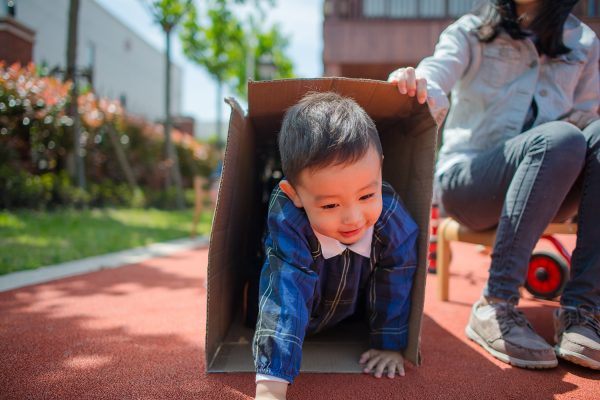
Play is the most important activity for young children outside.
Play is the means through which children find stimulation, well-being and happiness, and is the means through which they grow physically, intellectually and emotionally. Play is the most important thing for children to do outside and the most relevant way of offering learning outdoors. The outdoor environment is very well suited to meeting children’s needs for all types of play, building upon first-hand experiences.
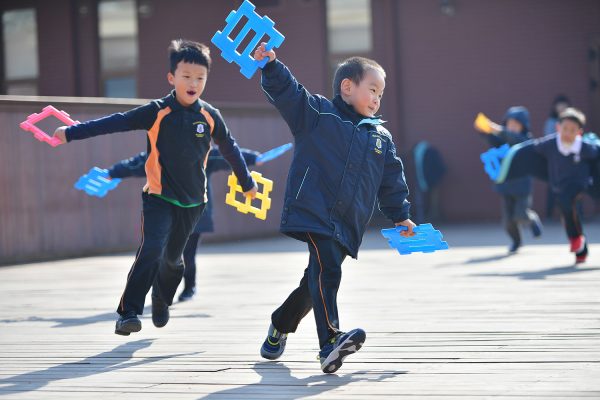
Outdoor provision can, and must, offer young children experiences which have a lot of meaning to them and are led by the child.
Because of the freedom the outdoors offers to move on a large scale, to be active, noisy and messy and to use all their senses with their whole body, young children engage in the way they most need to explore, make sense of life and express their feeling and ideas. Many young children relate much more strongly to learning offered outdoors rather than indoors. All areas of learning must be offered through a wide range of holistic experiences, both active and calm, which make the most of what the outdoors has to offer. Outdoor provision needs to be organised so that children are stimulated, and able, to follow their own interests and needs through play-based activity, giving them independence, self-organisation, participation and empowerment. The adult role is crucial in achieving this effectively.
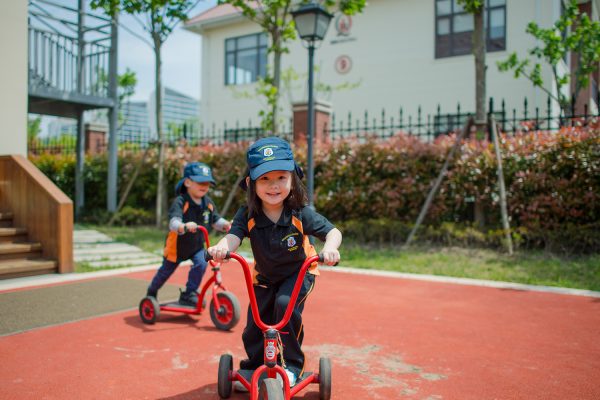
The outdoor space and curriculum must harness the special nature of the outdoors, to offer children what the indoors cannot. This should be the focus for outdoor provision, complementing and extending provision indoors.
The outdoors offers young children essential experiences vital to their well-being, health and development in all areas. Children who miss these experiences are significantly deprived. Outdoors, children can have the freedom to explore different ways of ‘being’, feeling, behaving and interacting; they have space -physical (up as well as sideways), mental and emotional; they have room and permission to be active, interactive, messy, noisy and work on a large scale; they may feel less controlled by adults. The real contact with the elements, seasons and the natural world, the range of perspectives, sensations and environments - multi-dimensional and multi-sensory, and the daily change, uncertainty, surprise and excitement all contribute to the desire young children have to be outside. It cannot be the same indoors, a child cannot be the same indoors - outdoors is a vital, special and deeply engaging place for young children.
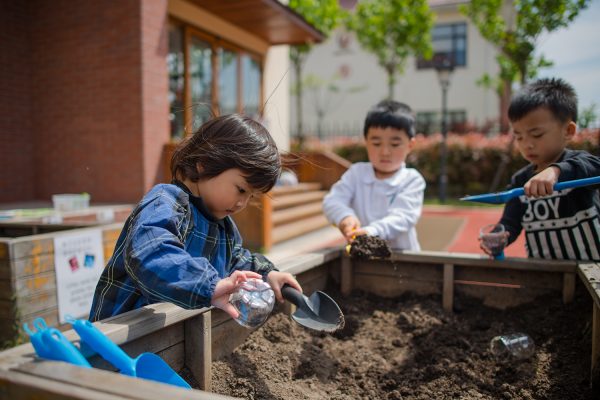
Outdoors should be a dynamic, flexible and versatile place where children can choose, create, change and be in charge of their play environment.
Outdoor provision can, and should, offer young children an endlessly versatile, changeable and responsive environment for all types of play where they can manipulate, create, control and modify. This offers a huge sense of freedom, which is not readily available indoors. It also underpins the development of creativity and the dispositions for learning. The space itself as well as resources, layout, planning and routines all need to be versatile, open-ended and flexible to maximise their value to the child.
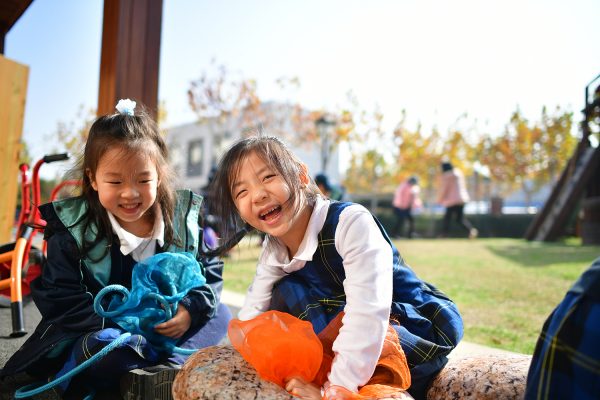
Young children must have a rich outdoor environment full of irresistible stimuli, contexts for play, exploration and talk, plenty of real experiences and contact with the natural world and with the community.
Through outdoor play, young children can learn the skills of social interaction and friendship, care for living things and their environment, be curious and fascinated, experience awe, wonder and joy and become ‘lost in the experience’. They can satisfy their deep urge to explore, experiment and understand and become aware of their community and locality, thus developing a sense of connection to the physical, natural and human world.
A particular strength of outdoor provision is that it offers children many opportunities to experience the real world, have first-hand experiences, do real tasks and do what adults do, including being involved in the care of the outdoor space. Settings should make the most of this aspect, with connected play opportunities.
An aesthetic awareness of and emotional link to the non-constructed or controlled, multi-sensory and multi-dimensional natural world is a crucial component of human well-being, and increasingly absent in young children’s lives. The richness of cultural diversity is an important part of our everyday world; this can and should be explored by children through outdoor experiences. Giving children a sense of belonging to something bigger than the immediate family or setting lays foundations for living as a community.

Young children should have long periods of time outside. They need to know that they can be outside every day, when they want to and that they can develop their ideas for play over time.
High quality play outdoors, where children are deeply involved, only emerges when they know they are not hurried. They need to have time to develop their use of spaces and resources and uninterrupted time to develop their play ideas, or to construct a place and then play in it or to get into problem-solving on a big scale. They need to be able to return to projects again and again until ‘finished’ with them. Slow learning is good learning, giving time for assimilation. When children can move between indoors and outside, their play or explorations develop further still. Young children also need time (and places) to daydream, look on or simply relax outside.
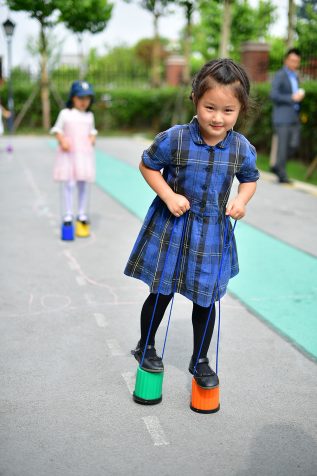
Adapted from Early Years Vision and Values (Learning through landscapes)
http://outdoormatters.co.uk/wp-content/uploads/2011/03/eyfs_res_vision_outdoor_play1.pdf







